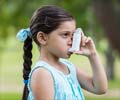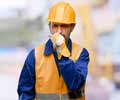
‘If clinical trials confirm the new study's findings, the filters could serve as a practical preventive measure for asthma management in polluted outdoor or indoor environments worldwide.’
Tweet it Now
While using the filters daily for two weeks, children in the study experienced decreased airway resistance and lung inflammation and increased airway elasticity, among other benefits."Pharmaceutical companies have spent large amounts to develop drugs that can work on lower airways, but they are very expensive. Our results show that using an air purifier to reduce the exposure of lower airways to pollutants could help asthmatic children breathe easier without those costly drugs," said Junfeng Zhang, professor of global and environmental health at Duke University's Nicholas School of the Environment.
"This warrants a clinical trial to confirm findings," he said. Zhang and his colleagues published their paper April 6 in JAMA Pediatrics, a journal of the American Medical Association.
Fine particulate matter (PM2.5) is a ubiquitous air pollutant originating from fossil fuel emissions, wildfires and other biomass burning, industrial sources, and gasoline- and diesel-powered vehicles. Thirty times smaller in diameter than a human hair, the particles are easily inhaled and can penetrate deep into the small, or lower, airways where they can trigger or exacerbate asthma symptoms. Inhalers don't help, since they are only designed to open upper airways.
The researchers conducted the double-blind crossover study in a Shanghai suburb during a period of moderately high PM2.5 pollution in 2017. They gave 43 children with mild to moderate asthma two air filters to use in their bedrooms. One was a high-efficiency particulate air (HEPA) filter capable of removing PM2.5; the other was a sham filter. Each filter was used for two weeks in random order with a two-week interval in between. Neither the children nor their families knew which filter was which.
Advertisement
This drop coincided with significant improvements in how easily air flowed in and out of the children's small airways and lungs, Bergin said. These improvements included a 24% average reduction in total airway resistance, a 43.5% average reduction in small airway resistance, a 73.1% average increase in airway elasticity, and a 27.6% average reduction in exhaled nitric oxide, a biomarker of lung inflammation.
Advertisement
If clinical trials confirm the new study's findings, the filters could serve as a practical preventive measure for asthma management in polluted outdoor or indoor environments worldwide, he said.
"Look at the high PM2.5 pollution levels that occurred in San Francisco last year as a result of smoke from the California wildfires, and at the air-quality problems happening this year from the bushfires in Australia," he said. "People should really consider using one of these devices during wildfires."
Source-Eurekalert









